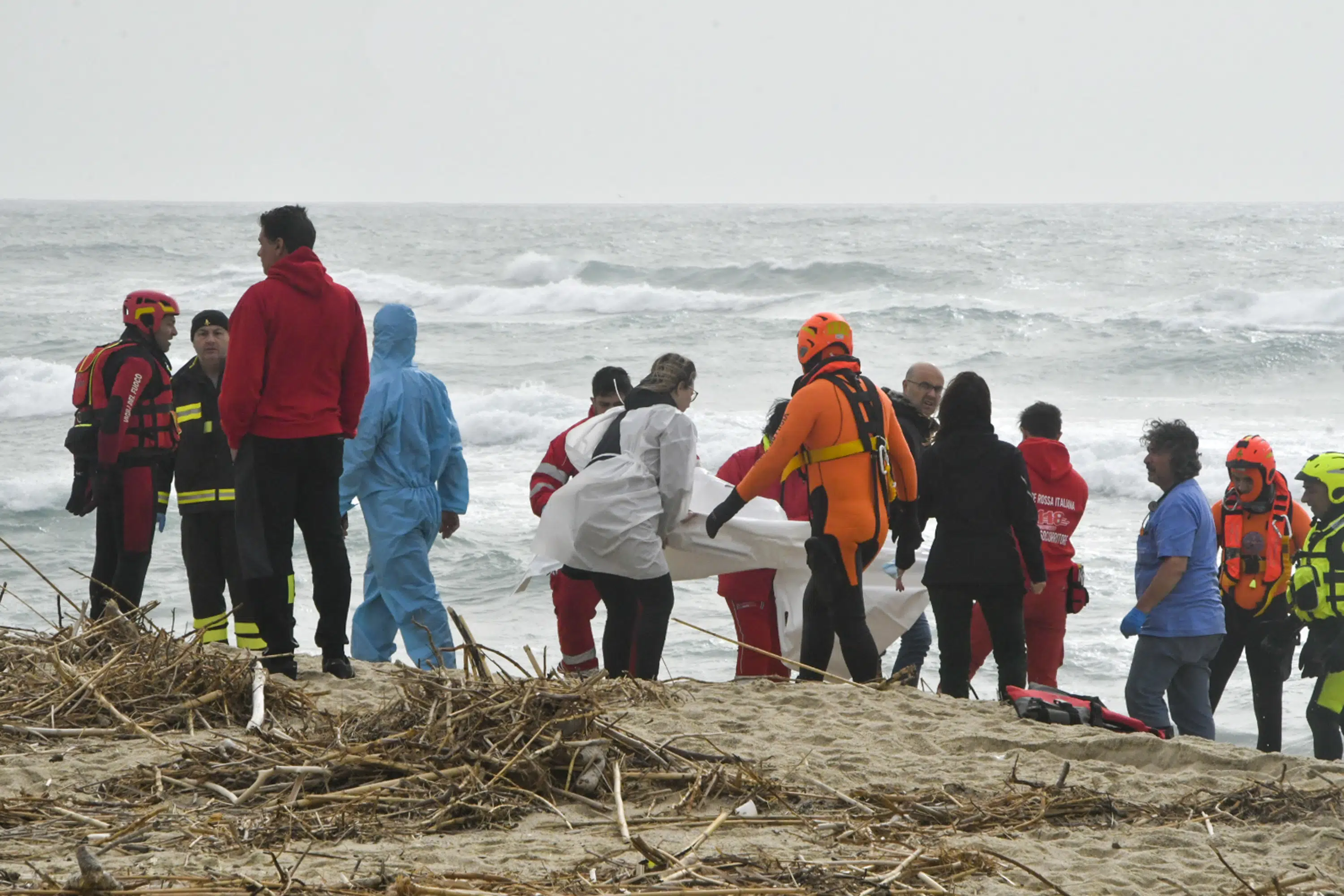
apnews.com
Migrant boat breaks apart off Italy; 43 dead, 80 survivors
ROME (AP) — At least 43 migrants perished when their overcrowded wooden boat smashed into rocky reefs just off southern Italy at dawn Sunday, the Italian Coast Guard said. “As of now, 80 persons were recovered alive — some of whom succeeded in reaching the shore after the shipwreck — and 43 bodies were found along the shore," the Coast Guard statement said shortly before noon.
International
ROME (AP) — At least 43 migrants perished when their overcrowded wooden boat smashed into rocky reefs just off southern Italy at dawn Sunday, the Italian Coast Guard said.
“As of now, 80 persons were recovered alive — some of whom succeeded in reaching the shore after the shipwreck — and 43 bodies were found along the shore,” the Coast Guard statement said shortly before noon.
Italian Premier Giorgia Meloni said that the migrants were crowded into a 20-meter (66-foot) -long boat in “adverse weather conditions.” In a statement released by her office, she expressed “her deep sorrow for the many human lives torn away by human traffickers.”
“It’s inhumane to exchange the live of men, women and children for the ‘price’ of a ticket paid by them in the false prospect for a safe voyage,” said Meloni, a far-right-wing leader whose governing allies includes the anti-migrant League party.
She vowed to use her leadership to press for crackdowns on departures arranged by human smugglers and to press fellow European Union leaders to help Italy in her quest.
A chunk of the boat, along with piles of splintered wood, littered the beach at Steccato di Cutro, part of Calabria’s coastline along the Ionian sea. Some of the survivors tried to keep warm, wrapped in what appeared to be colorful blankets or sheets.
A helicopter and motorboats were deployed in search efforts, including vessels from state firefighters, border police and the coast guard.
A Coast Guard motorboat rescued two men suffering from hypothermia and recovered the body of a boy in the rough seas, it said in a statement. Firefighter boats, including rescue divers, recovered 28 bodies, including three pulled by a strong current far away from the wreckage.
The Italian news agency AGI said that among the bodies was that of a baby a few months old.
Pope Francis on Sunday lamented that children were among the shipwreck victims.
Francis told the faithful in St. Peter’s Square: “I pray for each of them, for the missing and the other migrants who survived.” The pontiff added he also was praying for the rescuers “and for those who give welcome” to the migrants.
“It’s an enormous tragedy,” Crotone Mayor Vincenzo Voce told RAI state TV.
“In solidarity, the city will find places in the cemetery” for the dead, Voce said.
Details about the nationalities of the migrants were not immediately provided in the reports.
It was also not clear where the boat had set out from, but migrant vessels arriving in Calabria usually depart from Turkish or Egyptian shores. Many of these boats, including sailboats, often reach remote stretches of Italy’s long southern coastline unaided by the coast guard or humanitarian rescue vessels.
Another sea route employed by traffickers, considered among the deadliest for migration, crosses the central Mediterranean Sea from Libya’s coast, where migrants often endure brutal detention conditions for months, before they can board rubber dinghies or aging wooden fishing boats, toward Italian shores.
Most of the migrants departing from Libya are fleeing poverty in sub-Saharan Africa or in Asian countries including Bangladesh and Pakistan, not war or persecution, and risk having asylum bids denied by Italian authorities.
Another heavily plied route by traffickers’ boats begins on Tunisia’s shores, with many of those boats reaching the southern Italian island of Lampedusa, or Sardinian beaches, often without need of rescue.
Meloni’s government has concentrated on complicating efforts by humanitarian boats to make multiple rescues in the central Mediterranean by assigning them ports of disembarkation along Italy’s northern coasts, meaning the vessels need more time to return to the sea after bringing those rescued aboard, often hundreds of migrants, safely to shore.
























































